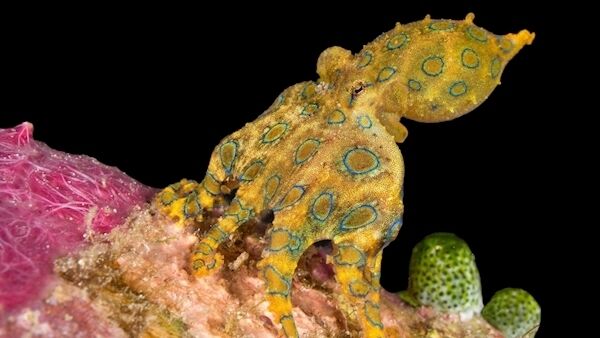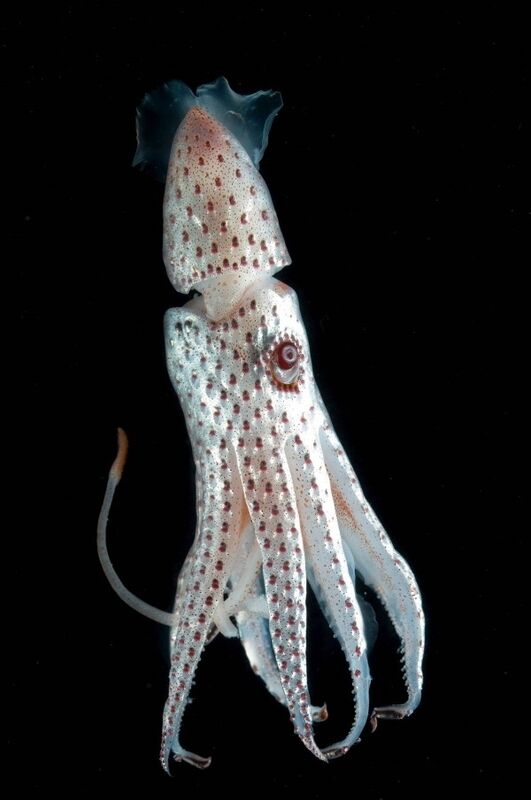Ireland's Dr Octopus explores one of the last great frontiers

Professor Louise Allcock wasn’t really thinking she would be able to phone home when she ventured 200m deep in the Indian Ocean a few weeks ago.
Her smartphone did come in very handy, however, when a sunfish swam right up to the window of her submersible.
“It just eyeballed me, and I turned on my iPhone and filmed it,” she says. “It was all of 2m wide, 2m deep,” she recalls, and the weight of two grand pianos.
Images of the pancake-shaped sea creature appeared some hours later on her Twitter account when she was safely back up on the deck of her research ship.
She tweeted: “Possibly the coolest thing I will see ever ever ever. Will somebody please buy me a sub so I can do this forever...”
“Dr Octopus” and “deep sea diva” is how she describes herself on social media, but Prof Allcock is one of the leaders in her field.
The British scientist, who formerly worked at Queen’s University Belfast, is currently head of zoology at NUI Galway.
Her expertise is in cephalopods: Octopuses, squids, cuttlefish, and nautiluses, which are all invertebrates with no backbone, along with sponges and corals.

She is cephalopod co-ordinator for the International Union for Conservation of Nature (IUCN) red data list of threatened species. Part of her research has involved naming deep sea species which she has identified.
And so the octopus Pareledone felix Allcock, which is on the IUCN red list, is named after her son, Felix, while the deep sea Muusoctopus johnsonianus is named after her husband.
“I haven’t had a chance to name another species since my daughter Poppy was born — her turn next,” she says, laughing.
The terms cephalopod and head-foot trip off her tongue, as Prof Allcock conveys her passion for the fast-moving creatures renowned for their large brains, rapid colour changes, keen senses, and complex behaviours.
When out on field work — as she loves to be — much of her work involves analysing images captured by remotely operated vehicles (ROV) at sea.
Her participation in the recent international Nekton mission in the Indian Ocean broke new ground for her and her fellow participants.
Nekton, a British non-profit research institute which works with the University of Oxford, had planned a mission to the depths of the Indian Ocean. It is described as “one of the planet’s last great unexplored frontiers”.
Prof Allcock explains: “Nekton hired a Danish-flagged research ship, Ocean Zephyr, with a full range of gear, including two crewed submarines or submersibles, ROV and multi-beam sonar equipment, and that meant we could actually sample at depths never reached before in that part of the world.”
She was second-in-command to lead scientist Dr Lucy Woodall, working with over 30 scientists and 18 crew on the first part of the six-week mission.
Its goal was to find new species and raise awareness about the impact of the changing climate, while documenting organisms and habitats 500m deep.
Prof Allcock says she had “the best dive ever” in the ship’s submersible, viewing not only the sunfish but also hammerhead and thresher sharks overhead as she focused on the smaller species and coral reefs below her.
“What was really interesting was that President Danny Faure of the Seychelles republic participated in his own dive,” she says.
He is leader of an archipelago of 115 islands about 1,500km east of the African coast which are extremely vulnerable to climate change.
Wearing t-shirts and shorts, Faure gave a live address in mid-April from 124m deep, broadcast by Sky News and AP teams on board the Nekton mission.
He appealed for greater protection of the “beating blue heart of our planet”.
One of the mission’s main discoveries was evidence near several coral islands of a “rariphotic” or “twilight” zone between 130m and 300m deep.

This zone — already identified in the Atlantic and Caribbean but never in the Indian Ocean — is almost devoid of sunlight, and so photosynthesis is not possible.
Species rely instead on particles falling from above for food.
Prof Allcock, who had to leave the expedition early to return to her day job, says the next year or so will be spent analysing material and data gathered.
In the meantime, she continues her own work on cephalopods, which she has recently documented in a new book co-authored with US scientists Dr Roger Hanlon and Dr Mike Vecchione.
“We wanted to capture their extreme diversity, from nautiluses, which look so like their fossil ancestors, to female pelagic blanket octopuses, with their patterned sail-like webs and dwarf males,” she says.
She and her fellow authors aimed to compile a scientific guide for the general reader, drawing on over 150 images from leading underwater photographers to convey the full beauty of what they term the “most spectacular invertebrates on earth”.
As Prof Allcock explains, cephalopods carry a large percentage of their brains in their arms — all eight in the case of the octopus.
“They are capable of learning and of retaining information. They have eyes and other senses rivalling those of humans, they change texture and body shape, and they change colour faster than a chameleon,” she says.

Among her favourites are the jewel squid, so called because of the bioluminescent glandular organs covering its body. It is also known as the “strawberry squid”, due to its colouring, and is found in tropical and subtropical north and south Atlantic waters.
“It can simultaneously look up and down, using its left eye which is much larger and tubular in shape, like a lens,” she says.
Another favourite is the Japanese firefly squid, which lives in the dark, and is covered in blue luminescent glandular organs or “photophores”.
At night, it migrates to the surface, but regulates the amount of light it emits to protect itself from predators below.
As she and her co-authors note, there are many misconceptions about cephalapods. They share extraordinary growth rates — living fast and dying young — and both octopuses and cuttlefishes are “kings of camouflage”.
Squids, which are often unfortunately used as bait, are the “wide open travellers” of the seas, often swimming many miles or migrating vertically up and down thousands of feet every day.
“We have so much to learn from these extraordinary creatures, which are a rich protein source, but which can teach us so much in the area of biotechnology,” she says.
“I love the weirdness of them all, and their beauty, and their amazing intelligence.”










